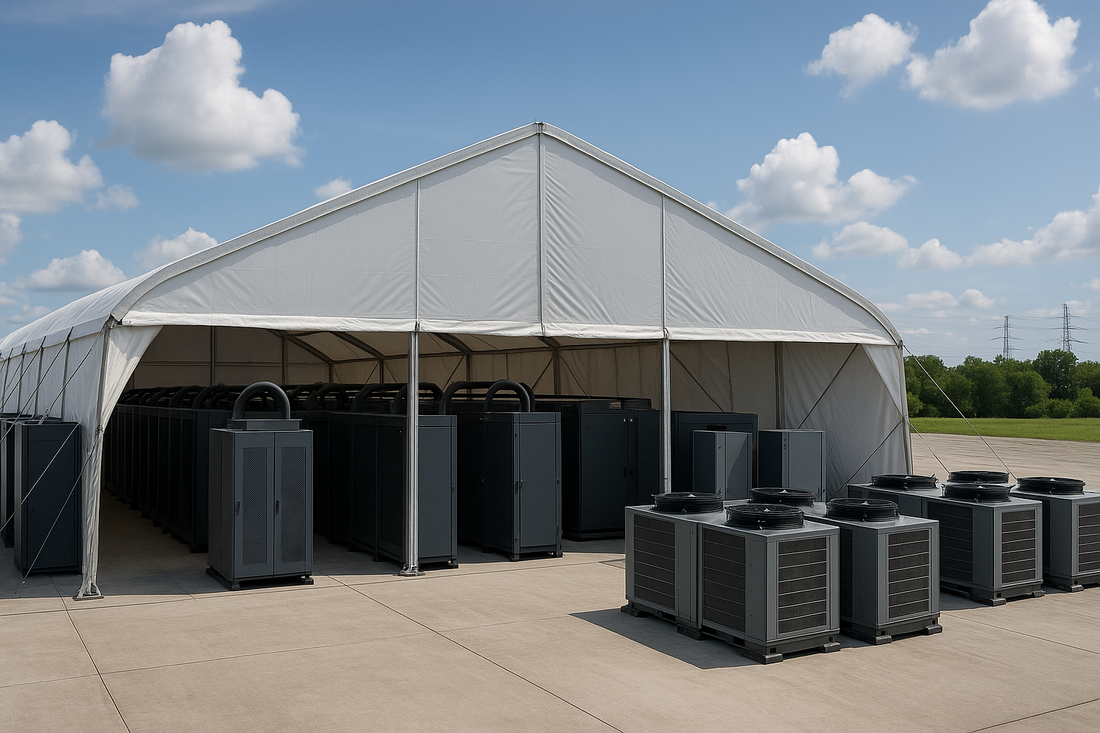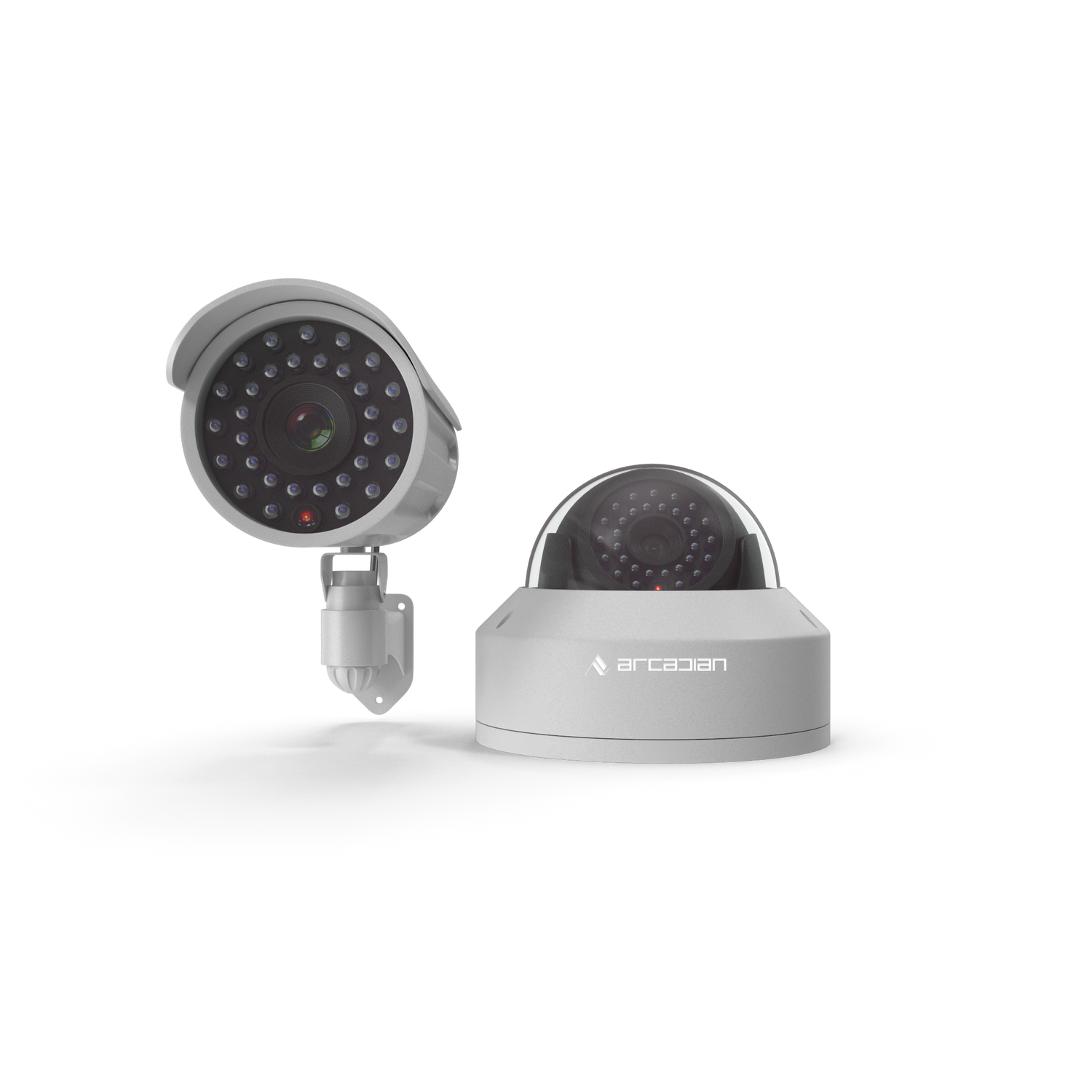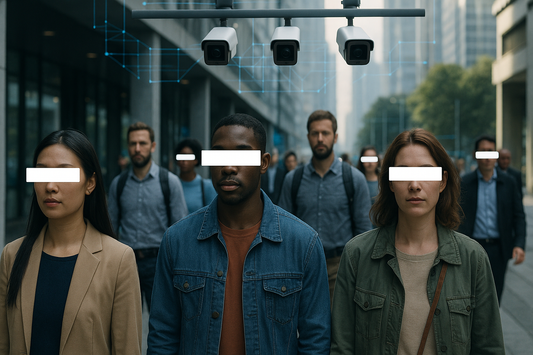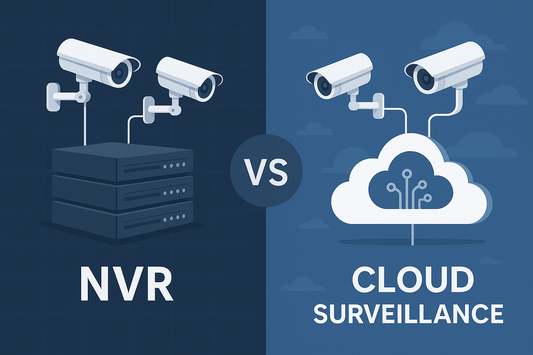Meta’s Tent Data Centers: Innovation or Industry Embarrassment?
Meta is deploying “tent data centers” to accelerate AI. The move may sound visionary, but beneath the canvas lies fragility, risk, and a warning about the future of AI infrastructure.

- Introduction
- Quick Summary / Key Takeaways
- Background & Relevance
- The Core Issue: Why Tents?
- Why Tent Data Centers Are a Bad Idea
- Industry Comparisons
- Historical Context: The Data Center Race
- Real-World Analogies
- Broader Implications
- Reverse Psychology: Why Maybe It Works
- Lessons for Security & Surveillance
- Comparisons & Use Cases
- Common Questions (FAQ)
- Conclusion & CTA
- Security Glossary (2025 Edition)
Introduction
The AI arms race is no longer abstract. It’s physical, visible, and consuming entire city grids. By 2025, global demand for AI compute has outpaced not just chip supply but also the world’s ability to house and power those chips. Meta, under Mark Zuckerberg, has made headlines for one of the strangest experiments in Silicon Valley history: tent data centers.
Yes, tents.
While Microsoft builds billion-dollar Azure campuses in Iowa, Google expands TPU-optimized sites in Oregon, and Oracle partners with Nvidia for superclusters, Meta is pitching weatherproof canvas structures as the new frontier of infrastructure. It sounds like guerrilla innovation—scrappy, fast, modular. But the truth is uglier: this is desperation disguised as disruption.
The idea of tents for billion-dollar GPUs may feel novel, but scratch the surface and you see fragility, reputational risk, and systemic cracks in Big Tech’s AI infrastructure model. Just as static NVRs fail modern surveillance needs, static canvas cannot bear the weight of a trillion-dollar AI economy.
ArcadianAI sees a lesson here: innovation without resilience isn’t innovation at all. Let’s dig deep into Meta’s tent experiment—and expose why it may be one of the most reckless infrastructure gambles of the decade.
Quick Summary / Key Takeaways
-
Meta is deploying AI hardware inside weatherproof tents.
-
Goal: accelerate compute deployment in global AI race.
-
Risks: cooling, redundancy, security, perception, regulation.
-
Rivals (Microsoft, Google, Oracle) take a longer-term approach.
-
Tents reveal Big Tech’s desperation under AI pressure.
Background & Relevance
Why does this matter now? Because AI isn’t just a buzzword—it’s a power-hungry, space-hungry, money-hungry beast. Consider:
-
Electricity Demand: By 2030, AI data centers could consume up to 9% of global electricity (International Energy Agency, 2024). Already, AI is driving double-digit growth in U.S. grid demand—the first time in decades.
-
CapEx Explosion: Microsoft alone spent $19 billion on data centers in 2024, more than the GDP of some nations. Meta is not far behind, with AI capex projected above $35 billion in 2025.
-
GPU Bottlenecks: Nvidia’s H100 and Blackwell chips are backlogged into 2026. Owning GPUs isn’t enough—you need somewhere to run them.
Meta’s permanent campuses—Prometheus in Ohio and Hyperion in Louisiana—aim to draw 1–5 GW of power each. But these sites take years to build. Enter the tents: a radical shortcut to keep Meta in the race.
But what looks like genius speed also looks like a symptom of systemic failure.
The Core Issue: Why Tents?
1. Speed vs. Permanence
Building a hyperscale data center is like building a city. Land acquisition, permits, substations, cooling infrastructure, fiber connectivity—nothing is fast. Meta doesn’t have years to wait; OpenAI, Microsoft, Google, and Amazon are already deploying compute at massive scale.
Tents solve this—at least on paper. Prefabricated frames and fabric can be assembled in months, allowing GPU clusters to go online while concrete is still being poured next door.
2. Modularity
Meta’s tents rely on prefab power and cooling modules, similar to containerized approaches pioneered by IBM and Oracle years ago. If a cluster overheats or power shifts, the module can be swapped or relocated. It’s agile—but agility has limits when the hardware inside costs billions.
3. Cost Containment
Meta is known for cutting costs—shutting down entire projects, laying off thousands, and redirecting billions into AI. Tents reduce upfront CapEx by skipping features like thick concrete walls, diesel backup generators, or permanent water cooling towers. But cutting costs in infrastructure is like cutting corners in aviation—cheap until it fails.
4. Competitive Fear
Let’s be honest: tents aren’t born of vision. They’re born of fear. Fear of falling behind OpenAI/Microsoft’s Azure clusters, Google DeepMind’s TPU-optimized sites, and Oracle’s Nvidia partnerships. Zuckerberg’s mantra isn’t “move fast and break things” anymore—it’s “move fast or get buried.”
Why Tent Data Centers Are a Bad Idea
Here’s where the bold critique begins.
Cooling Fragility
AI training runs hot. A single Nvidia H100 cluster can draw 10–15 kW per rack, generating enormous thermal load. Concrete data centers are designed to absorb, insulate, and redirect that heat. Tents? They trap it. Liquid cooling helps, but without stable containment, thermal efficiency collapses. One Ohio heatwave could cripple Meta’s training runs.
Reliability Trade-Offs
Redundancy is the holy grail of uptime. Hyperscalers build N+1 or 2N redundancy into power and cooling. Reports suggest Meta’s tents omit full diesel backup, leaving GPU farms vulnerable to grid outages. For AI workloads that can’t afford interruptions, that’s gambling with billions.
Environmental Vulnerability
Storms, floods, high winds—weather is an enemy of fabric. Tents may survive “normal” conditions, but extreme weather events are rising. Louisiana’s Hyperion campus sits in hurricane territory. Parking a trillion-dollar AI cluster under canvas there isn’t bold—it’s reckless.
Security Risks
Concrete walls deter intrusion. Tents invite it. Physical access controls, fire suppression, pest resistance—all are compromised in temporary builds. For a company already facing trust crises, this is a PR nightmare waiting to happen.
Reputational Damage
Investors expect bold, not brittle. Regulators expect safe, not sloppy. Meta already faces skepticism over privacy and its Metaverse flop. Tent data centers reinforce the image of a company improvising, not leading.
Industry Comparisons
Meta isn’t the only one racing to scale. But others are playing a different game:
| Company | Strategy | Build Model | Risk Profile | Perception |
|---|---|---|---|---|
| Meta | Tent deployments for speed | Modular, canvas, temporary | High risk (cooling, security) | Desperate |
| Microsoft | Azure + OpenAI | Concrete hyperscale, renewable-backed | Medium risk | Visionary |
| TPU-optimized sites | Fully integrated, AI-native builds | Low risk | Stable | |
| Oracle | Nvidia partnerships | Prefab + permanent | Medium risk | Opportunistic |
| Amazon AWS | Global steady rollout | Permanent hyperscale, diversified | Low risk | Reliable |
| Tesla/Elon Musk | xAI + Supercluster | Concrete, high-efficiency GPU farms | Medium risk | Bold |
| ByteDance (China) | Domestic AI scaling | State-backed permanent sites | Medium risk | Strategic |
The contrast is clear: everyone else is building moats. Meta is pitching tents.
Historical Context: The Data Center Race
The tent fiasco is just the latest chapter in the history of data center improvisation:
-
1990s: Banks and telcos ran servers in office basements. Outages were common.
-
2000s: Google pioneered hyperscale—concrete, redundancy, efficiency.
-
2010s: Cloud wars (AWS, Azure, GCP) solidified permanent, global infrastructure footprints.
-
2020s: AI demand breaks the model. Even hyperscalers can’t keep up.
Meta’s tents are a throwback—closer to 1990s server closets than 2020s hyperscales. It’s regression disguised as disruption.
Real-World Analogies
-
Fyre Festival of Infrastructure: Big promises, flimsy tents, catastrophic execution.
-
Duct Tape on a Rocket: May lift off, but should you ride it?
-
Skyscraper on Scaffolding: Looks tall but collapses under weight.
-
Ferrari in a Carport: Billion-dollar GPUs sheltered by canvas.
Broader Implications
AI Reliability Crisis
If tent clusters fail mid-training, Meta loses weeks of compute. A single training run for an LLM can cost tens of millions. Downtime is ruinous.
Investor Anxiety
Wall Street craves growth, but not fragility. Tents may accelerate capacity, but they undermine investor confidence in Meta’s resilience.
Public Perception
Meta already struggles with brand trust. Tent data centers confirm suspicions: Meta cuts corners.
Policy Backlash
Local regulators may balk at “temporary” deployments that skirt environmental or safety standards. Expect lawsuits, investigations, or permit delays.
Reverse Psychology: Why Maybe It Works
Let’s flip it. Maybe tents are genius.
-
They expose government permitting delays by showing that capacity can be online in months, not years.
-
They embarrass rivals stuck in concrete while Meta experiments in real time.
-
They set a precedent for modular, military-style deployment of AI compute.
But here’s the catch: genius only if it works. If it fails, tents become a global punchline.
Lessons for Security & Surveillance
The parallels are striking.
-
Tents = static NVRs: fragile, brittle, not designed for modern scale.
-
Hyperscale = cloud-native VSaaS: resilient, adaptive, future-proof.
-
ArcadianAI’s Ranger solves the exact same pain point in surveillance: don’t rely on brittle shortcuts, build adaptive intelligence that works anywhere, anytime.
Comparisons & Use Cases
| Problem | Meta’s Tent Solution | ArcadianAI’s Lesson |
|---|---|---|
| Speed | Deploy GPUs under canvas | Deploy AI surveillance in cloud instantly |
| Cost | Cut CapEx, cut resilience | Cut CapEx by replacing NVRs, not reliability |
| Risk | Heat, weather, downtime | Cloud redundancy, AI alerts, adaptive resilience |
| Reputation | Fragility, desperation | Innovation, trust, stability |
Common Questions (FAQ)
Q1: Are tent data centers permanent?
No—they’re temporary stopgaps until Meta completes permanent facilities.
Q2: Do tents have backup power?
Reports suggest some lack diesel backup, raising reliability concerns.
Q3: Are other companies using tents?
Not at Meta’s scale. Most hyperscalers rely on prefab containers or permanent builds.
Q4: Why is Meta using tents?
To speed up deployment amid global competition in AI compute.
Q5: Could tents inspire industry change?
Yes—if successful, they could accelerate modular approaches. But failure will reinforce traditional methods.
Q6: Are tents cheaper than permanent sites?
Upfront yes. But lifecycle costs (maintenance, downtime, failures) could make them more expensive.
Q7: How much power do tents consume?
They host the same GPUs as concrete sites. Expect hundreds of megawatts per campus.
Conclusion & CTA
Meta’s tent data centers may be the boldest infrastructure experiment of 2025—or the most reckless. They reflect the desperation of a trillion-dollar company trapped by its own ambitions.
At ArcadianAI, we see the parallel clearly: brittle, short-term fixes don’t solve long-term challenges. Whether in video surveillance or AI infrastructure, resilience and adaptability always win.
Security Glossary (2025 Edition)
AI Data Center — A facility optimized for hosting AI workloads, requiring GPU clusters, advanced cooling, and high-voltage power.
Tent Data Center — Temporary fabric or prefab structures housing compute hardware, designed for rapid deployment.
Hyperscale — Large-scale data centers operated by Big Tech, often consuming 100+ MW.
Prometheus (Meta) — Meta’s Ohio AI data center campus, projected to exceed 1 GW by 2026.
Hyperion (Meta) — Meta’s Louisiana AI campus, projected to 5 GW by 2030.
Liquid Cooling — Method using liquid to remove heat from dense GPU clusters.
Redundancy (N+1, 2N) — Backup design ensuring data center uptime during failures.
NVR (Network Video Recorder) — Legacy hardware for recording camera feeds, fragile compared to cloud VSaaS.
VSaaS (Video Surveillance as a Service) — Cloud-native video surveillance model, scalable and resilient.
GPU Cluster — High-performance servers built around GPUs for AI training.
Colocation (Colo) — Renting data center space from third-party providers.
Power Usage Effectiveness (PUE) — Metric measuring data center energy efficiency.
Modular Data Center — Prefabricated, scalable data center units that can deploy faster than traditional builds.
Downtime — Period of system unavailability. In AI, downtime during training can cost millions.
Desperation Build — Informal term for rushed infrastructure projects prioritizing speed over resilience.
Cooling Tower — Structure that removes heat from water-cooled systems. Rare in tents.
Fabrication Facility (Fab) — Plant where chips (like Nvidia’s GPUs) are manufactured.

Security is like insurance—until you need it, you don’t think about it.
But when something goes wrong? Break-ins, theft, liability claims—suddenly, it’s all you think about.
ArcadianAI upgrades your security to the AI era—no new hardware, no sky-high costs, just smart protection that works.
→ Stop security incidents before they happen
→ Cut security costs without cutting corners
→ Run your business without the worry
Because the best security isn’t reactive—it’s proactive.






